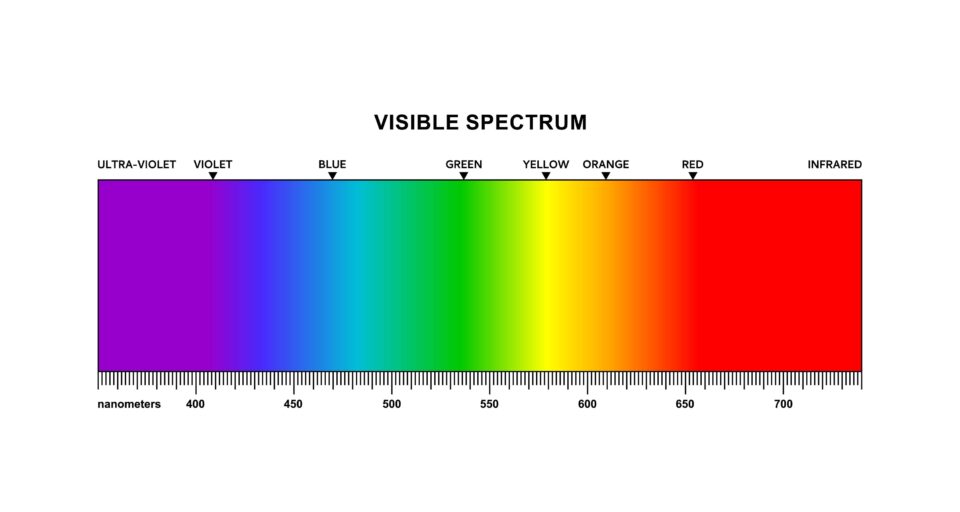
Why the Sky Is Blue: Everything You Need to Know
Picture this: You’re outside, enjoying a beautiful, sunny day with your child. You watch them fondly as they tilt their head back and take in the cloudless sky with wonder, and then you hear them ask, “Why is the sky blue?”
And there it is! Confirmation that your child has crossed over from simply observing the world to actively questioning it. You’re thrilled that they’re curious, but also wondering how to answer their question.
Why is the sky blue? If you don’t have a good answer yet, don’t worry. We’ll take you through the details—starting with the light spectrum.
What Is the Light Spectrum?
A light source—in our case, the sun—produces different types of energy that travel in waves, much like water in the ocean, at longer or shorter wavelengths (the distance between the highest or lowest points of a wave). Scientists measure wavelengths in nanometers (nm).
How big is a nanometer? Well, 1 inch equals 25,400,000 of them. In other words, nanometers are tiny.
The energy with the shortest wavelength, gamma rays, measures 1 × 10-5nm. Energy with the longest wavelength, AM radio waves, measures 1 × 1013nm. Between the two lies the visible spectrum—the light we can see—with wavelengths measuring between 380nm and 780nm. These wavelengths of light correspond to the different colors the human eye perceives.
- Violet: 380–435nm
- Blue: 435–500nm
- Cyan: 500–520nm
- Green: 520–565nm
- Yellow: 565–590nm
- Orange: 590–625nm
- Red: 625–740nm

So the longest wavelengths of visible light look red, while the shortest look violet. When these wavelengths are all present in light, your eye perceives it as white.
Why Is the Sky Blue?
Now that you know the colors of light have different wavelengths, it’s time to tackle the big question. Some people think the sky is blue because the ocean reflects blue light into the atmosphere. That’s not entirely correct.
When visible light enters our atmosphere, it contacts gas molecules that form the air we breathe. This contact causes the light waves to reflect off these molecules, scattering them throughout the atmosphere. Because of its shorter wavelength, blue light gets scattered and bounced around more than any other color in the visible spectrum, making it even more visible to the human eye and causing the sky to appear blue.
Who Discovered Why the Sky Is Blue?
Parents everywhere owe their thanks to John Tyndall, an Irish physics professor from the late 1800s, for the answer to this age-old question. He wanted to understand how the sun warmed Earth, so he experimented with a glass tube he constructed to simulate our planet’s atmosphere.
When Tyndall introduced smoke into the glass, he noticed that the air inside appeared blue when looking at the tube from one direction. When Tyndal observed the light from a position directly opposite its source, it turned red. These observations led Tyndall to suggest that dust particles in our atmosphere direct blue light toward our eyes, leading us to perceive the sky as blue.
Tyndall was mostly correct, but we now understand that the sky is blue because blue light’s shorter wavelength causes it to interact more frequently with air molecules, not dust. British Nobel Prize-winning physicist Lord Rayleigh (John William Strutt) was the first to confirm the interaction in 1871. He named it the Rayleigh Scattering Effect.
What color is the sky, actually? The gases in our atmosphere are colorless, so without the scattering effect that creates a blue sky, it would appear clear during the day.
Why Does the Sky Turn Red at Sunset?
Your child has probably noticed that the sky isn’t always blue, which may lead them to another question: “Why is the sky red at sunset?”
When the sun goes down, the angle at which its light passes through our atmosphere changes. This change increases the time it takes for light to travel from the sun to our eyes, so it gets more and more scattered along its way.
As a result, the shorter blue wavelengths become so dispersed that we can no longer perceive them. But because yellow, orange and red light waves have longer wavelengths, they resist the scattering effect. Without blue light to cover them up, they become visible and create stunning sunsets.
Why Is the Sky Blue When Space Is Black?
Your future space explorer is a smart one to ask this question. Space is black because it doesn’t have an atmosphere like Earth does to scatter and bounce light waves around. There are actually quite a lot of stars out in space even in its darkest patches. But most of the light from those stars is too dim for our eyes to pick up, and because the universe is expanding, light from some newer stars hasn’t reached us yet.
Is the Sky Blue on Other Planets?
Another great question! The colors in the sky on other planets depend on the gases in their atmospheres. Different gases lead to different colors. For example, Mars’s atmosphere is mostly carbon dioxide, creating a different scattering effect as light travels toward the surface that makes the Martian sky appear reddish. Mars’s sunsets, however, are a shade of blue, just the opposite of what happens on our planet.
But What About the Ocean?

We mentioned the misconception that the ocean’s reflection gives the sky its bluish color. So then, why does the ocean also look blue?
Seawater acts as a filter, absorbing the longer wavelengths of the light spectrum and reflecting the shorter ones as light travels toward the bottom of the sea, which gives the water a blue appearance. Sometimes the sea may seem more green than blue, and some water bodies may even appear red. That’s because the ocean is full of floating sediments and other particles that reflect light differently than pure seawater, creating these wonderful color variations.
Did your young adventurer enjoy this foray into our big blue atmosphere? Help them take the next step in their explorations by leading them on a journey to discover how long it takes an astronaut to reach outer space. Once they’re in orbit, introduce them to the planet Saturn and its rings or study the life cycle of a star. They’ll have so much fun learning about the wonders of the universe that it may be a while before they “return” to Earth.
Ready for a longer journey of scientific exploration? Expand your child’s universe with our STEM kits and products.
